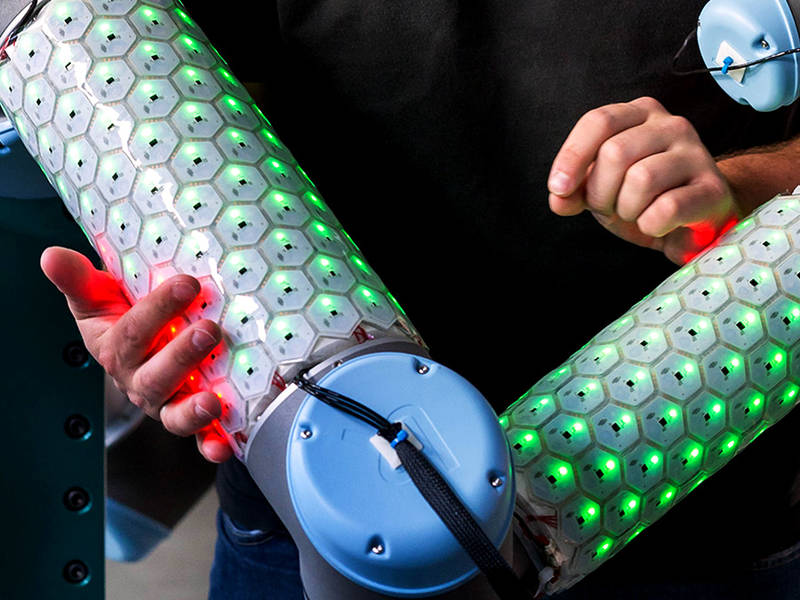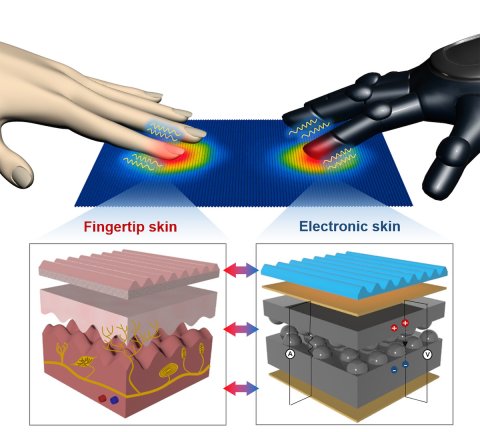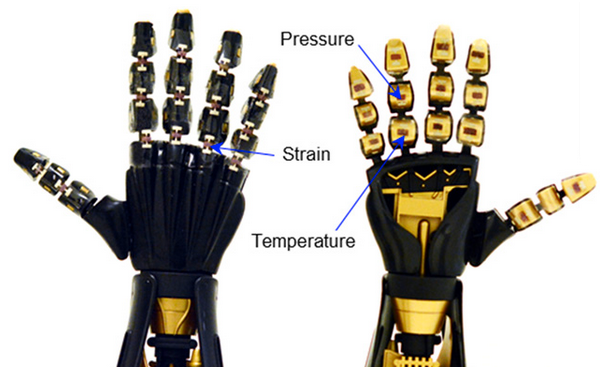Skin is a very important sensor for human beings.It helps us learn more about our environment and how we can safely interact with it. It works along with other senses, so it could send the most accurate information to the brain that results in our intelligence as a human race.Researchers at the University of Houston have created an artificial skin that allows a robotic hand to sense the difference between heat and cold. They created a semiconductor, covered with rubber that works even when stretched by 50%.

A robot arm with its own fully-artificial skin, that can feel when its touched and factors like hot and cold.
Concept
The idea of creating such skin is good and it may find its best use in medicine. The scientists behind it tried their best to make it as close as they could to human skin. It uses different technology and methods all-in-one to resemble the fingers of a hand so that when the “skin” interacts with any surface, it could send information to a software (the brain) and therefore we could see what is known to use as body language as a reaction by the robot.
“Our goal is to achieve multimodal sensitivity on all parts of a humanoid robot. We believe that this is an important step to close the sensational gap between human and humanoids.” says ICS (Institute for Cognitive Systems).

Electronics and robots are typically limited by the stiff and rigid semiconductor materials that make up their computer circuits. As such, most electronic devices lack the ability to stretch.”It’s a piece of rubber, but it has the function of a circuit and sensors,” said Cunjiang Yu, an assistant professor of mechanical engineering at the University of Houston.
In experiments, Yu and his colleagues used the electronic skin to accurately sense the temperature of hot and cold water in a cup and also translate computer signals sent to the robotic hand into finger gestures representing the alphabet from American Sign Language.
The main problem with this kind of technology hitting the market is that the products it consists are way too expensive for mass production, or the transmission of electrons through the material is not very efficient.This drives scientists to the idea of creating a material that is cheap, but stretchy and effective.Yu and his colleagues made a material from nanowires 1,000 times thinner than a human hair — into a solution of a widely used, silicon-based organic polymer.

This picture shows where the sensors of the robot hand are located.
Lately, we could clearly see the rise in the development of such technology. With projects like this and “Exoskeleton” I am honestly waiting to see a fully equipped human-looking robot in near future. I don’t know how the mass of people will react to this idea, but we have to accept the fact that things like this will be seen more often as we continue to search for ways to ease our daily life. I personally back-up this innovation, as far as it doesn’t get way too far if you get my point.




